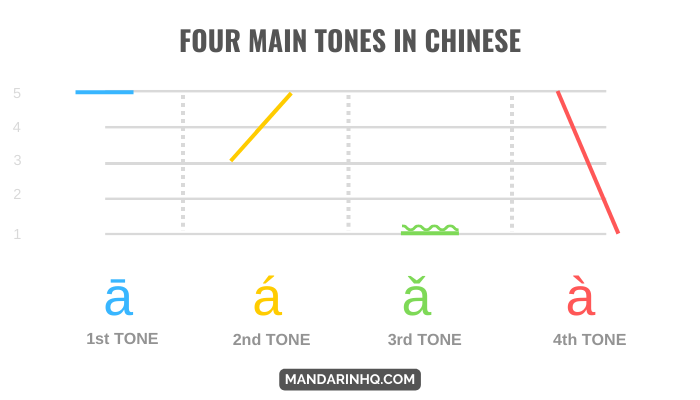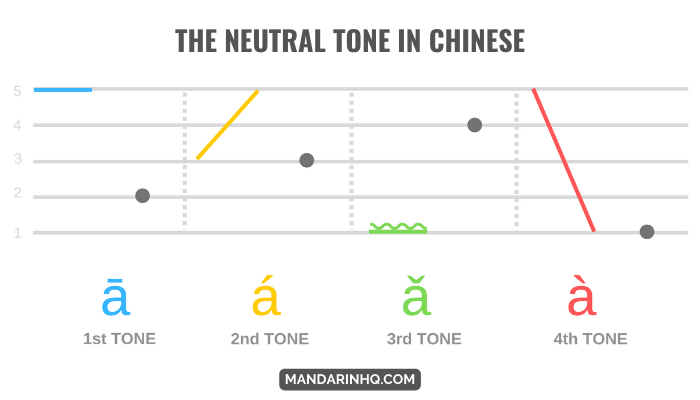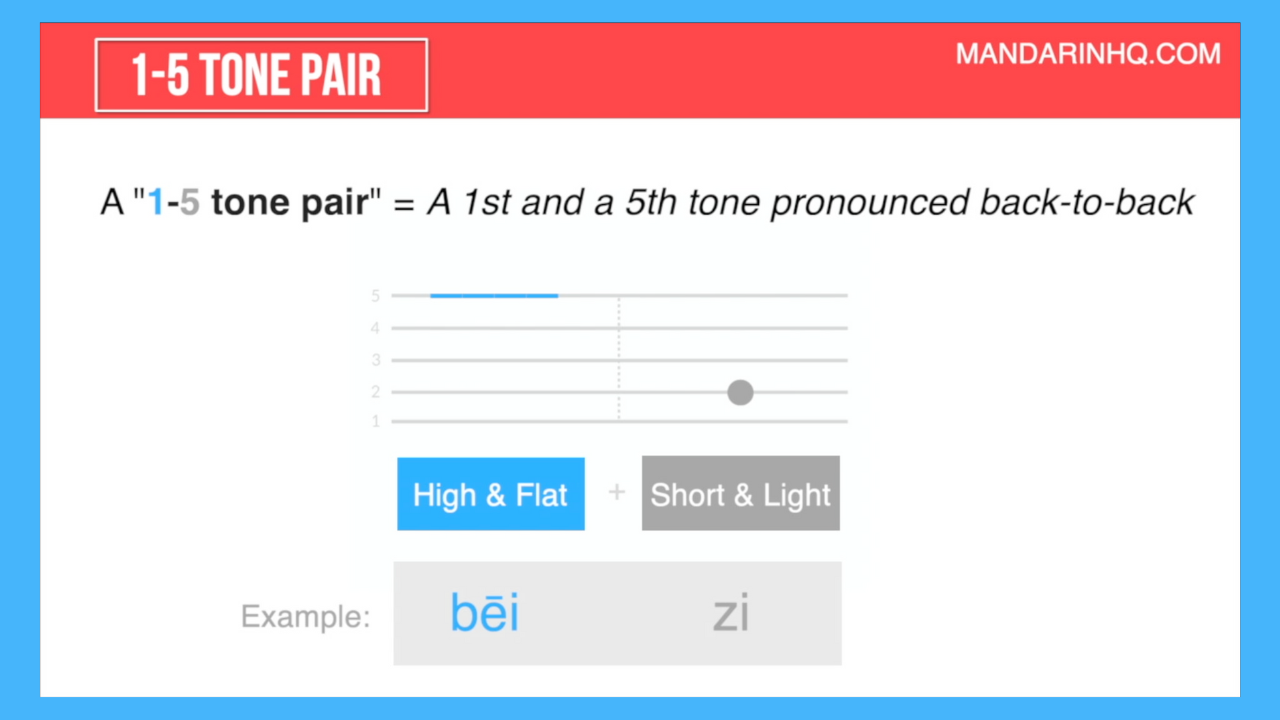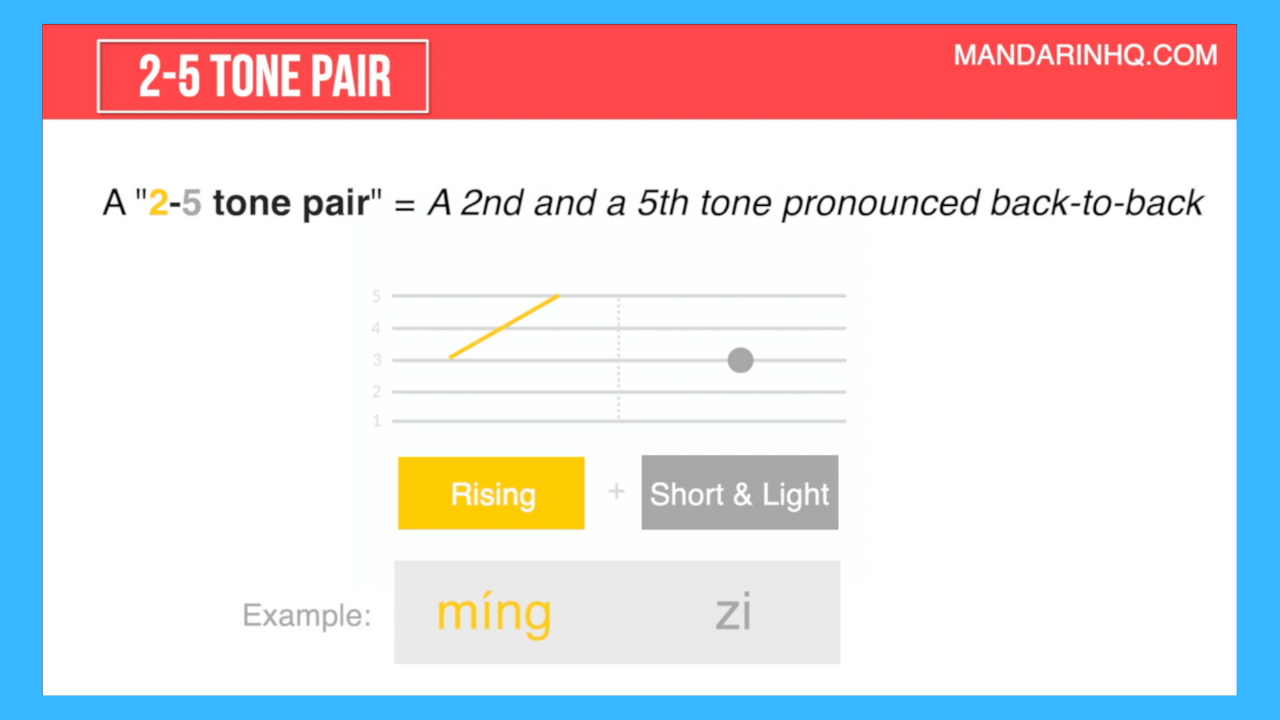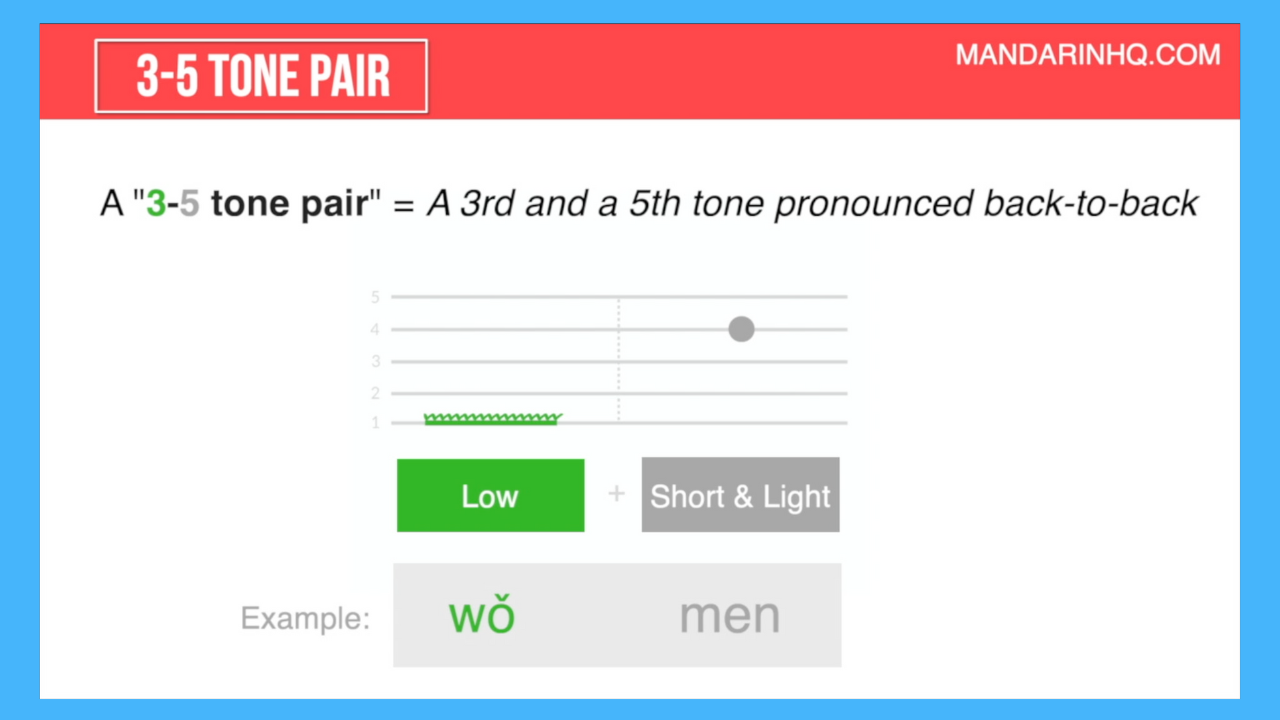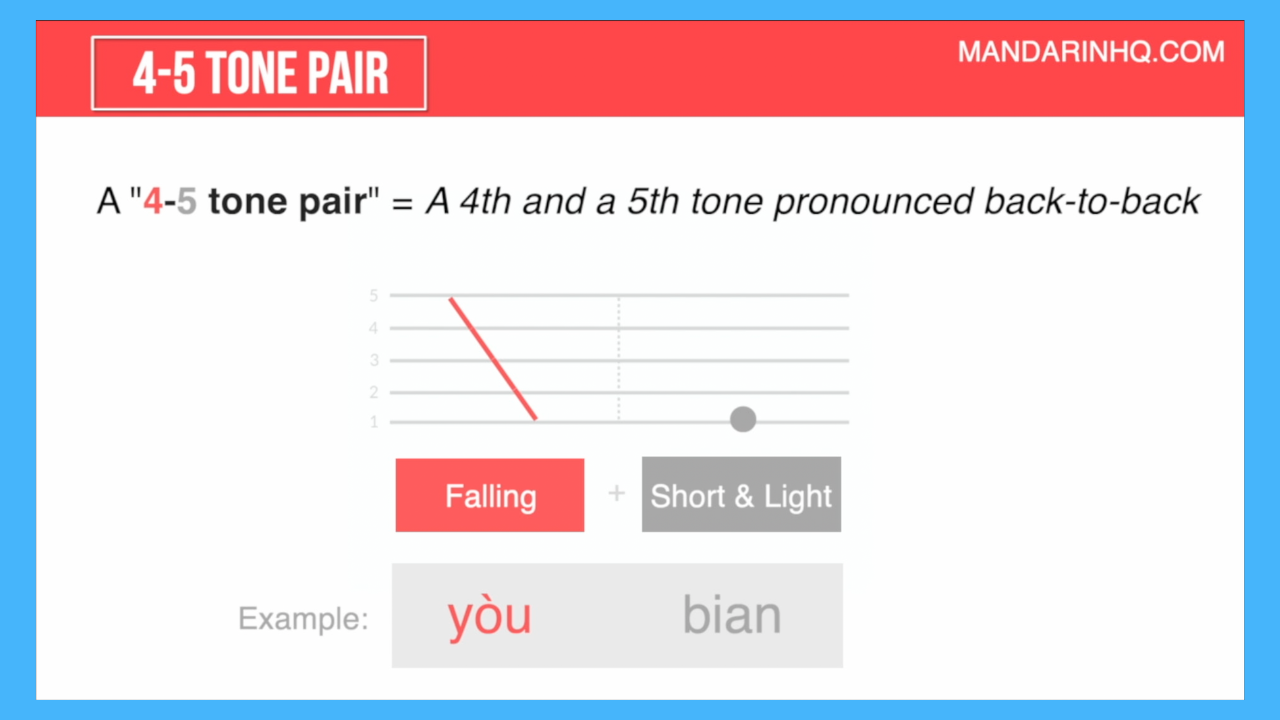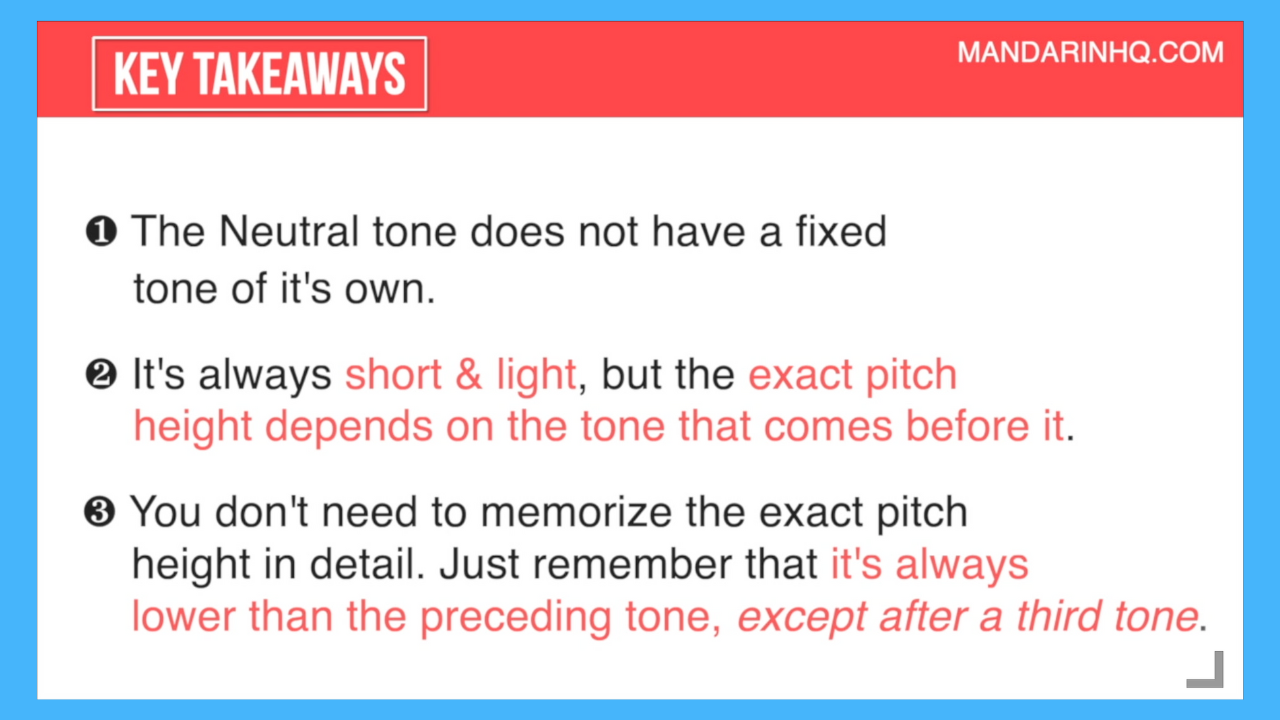In this guide we're going to help you unlock the key to mastering the Chinese neutral tone.
We'll dive deep into the characteristics of the neutral tone and learn how it's pronounced following each of the four main tones in Chinese. Practice along with me, and you'll feel comfortable using the neutral tone in no time!
Neutral Tone Basics
The neutral tone is also known as the "5th tone" or "qīng shēng" (轻声 light tone) in Chinese. Unlike the four main tones…
... the the neutral tone doesn't have a specific pitch contour.
But it is always short & light.
Apart from that, there's more thing you should know:
The exact pitch height of a neutral tone depends on the tone that comes before it.
Like this:
I cover this thoroughly in my Chinese pronunciation course.
So let’s take a look inside for some good examples:
After a first tone:
After a second tone:
After a third tone:
After a fourth tone:
Alright, well done! Here are the key takeaways from today’s lesson:
Remember, good tones are essential for sounding natural in Mandarin. And if you want to build a solid foundation, check out my Chinese Pronunciation Gym. Show a short clip from the course promo video with text: “Link in Description”.
Ok, that’s all for today. 好了,我是Angel. 我们下次见!
You might also find these posts interesting:


